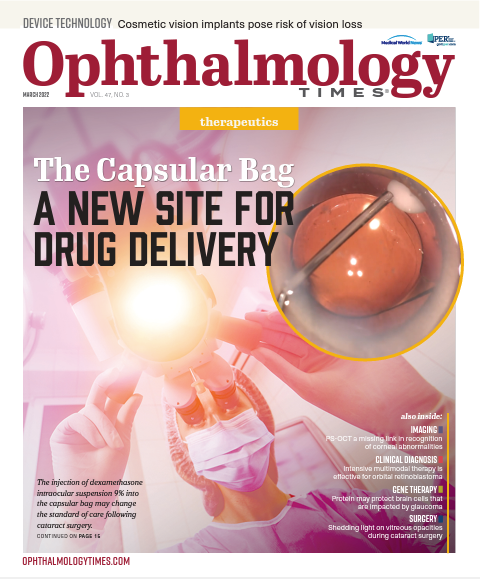Publication
Article
Digital Edition
Intravitreal bevacizumab for ROP proves less can be more
Author(s):
Lower doses vs higher ones are equally effective for treating disease
Reviewed by Thomas Wayne Hejkal, MD, PhD

Study findings have revealed that a 30-µg intravitreal dose of bevacizumab (Avastin, Genentech, Inc) is as effective as a much larger dose for treating retinopathy of prematurity (ROP), according to Thomas Wayne Hejkal, MD, PhD, in private practice at Eye Consultants, P.C., in Omaha, Nebraska.
A 625-µg dose of intravitreal bevacizumab is effective for treating ROP, but with that higher dose comes concerns about the possibility of systemic adverse effects. Because limited data have indicated that 30 µg is also effective, Hejkal and colleagues retrospectively compared the posttreatment results in 22 patients who received the low dose of bevacizumab with the results of 22 who had been treated with the high dose.
Hejkal, chair emeritus of the Department of Ophthalmology and Visual Sciences at the University of Nebraska Medical Center in Omaha, based the use of the markedly lower dose of bevacizumab on a study by Wallace et al.1 In that study, none of 10 eyes in the lowest-dose group (0.031 mg) had an ROP recurrence or needed additional treatment. This group had the best outcome in that study.

Dose comparisons of intravitreal bevacizumab
The investigators conducted a nonrandomized, nonmasked, consecutive case series study that included infants with ROP treated with the 2 doses of intravitreal bevacizumab. The same retina specialist treated both groups of infants.
In this study, 22 patients (44 eyes; mean estimated gestational age at birth ± 95% CI, 24.7 ± 0.44 weeks; mean birth weight, 612 ± 51.8 g) were treated with the 30-µg dose in 0.03 mL and compared with 22 consecutive previously treated patients (44 eyes; mean estimated gestational age at birth ± 95% CI, 24.6 ± 0.57 weeks; mean birth weight, 672 ± 71.5 g) who received 625-µg in 0.025 mL.
The primary outcome measures were the percentage of eyes with initial ROP regression and the percentage of eyes that required subsequent laser treatment. A secondary outcome measure was the time between bevacizumab treatment and subsequent laser treatment.
The results indicated that all eyes in the 30-µg and 625-µg groups had initial regression of ROP and that 50% of all eyes in both groups were treated with laser at some point after the bevacizumab treatment. The respective mean estimated gestational ages at the time of laser treatment were 53.5 ± 4.48 weeks and 50.7 ± 2.40 weeks, a difference that did not reach significance (P = .54).
The times to the need for laser treatment were also similar and nonsignificant (P = .23) in both groups, 16.3 ± 4.23 weeks and 15.0 ± 2.10 weeks, respectively.
In the higher-dose group, 1 eye developed a 4B retinal detachment and 3 babies died from causes presumably unrelated to treatment, Hejkal reported.
“A 30-µg dose of intravitreal bevacizumab was as effective as a 625-µg dose for treating ROP,” Hejkal concluded. “The subsequent laser treatment rates were identical (50%) in each group and the times to laser treatment also were similar. These data provide additional evidence from clinical practice to support the use of a 30-µg dose of bevacizumab for treating ROP.”
Thomas Wayne Hejkal, MD, PhD
E: tom@eyeconsultantspc.com
This article is adapted from Hejkal’s presentation at the 2021 American Society of Retina Specialists 39th annual meeting in San Antonio, Texas. He has no financial interest in this subject matter.
Reference
1. Wallace DK, Dean TW, Hartnett ME, et al; Pediatric Eye Disease Investigator Group. A dosing study of bevacizumab for retinopathy of prematurity: late recurrences and additional treatments. Ophthalmology. 2018;125(12):1961-1966. doi:10.1016/j.ophtha.2018.05.001

Newsletter
Don’t miss out—get Ophthalmology Times updates on the latest clinical advancements and expert interviews, straight to your inbox.




